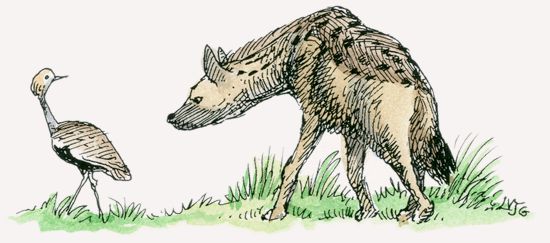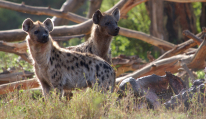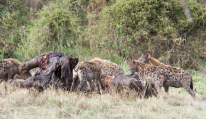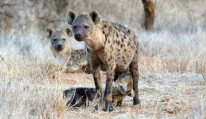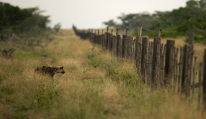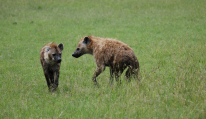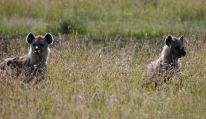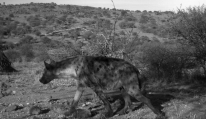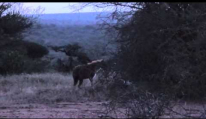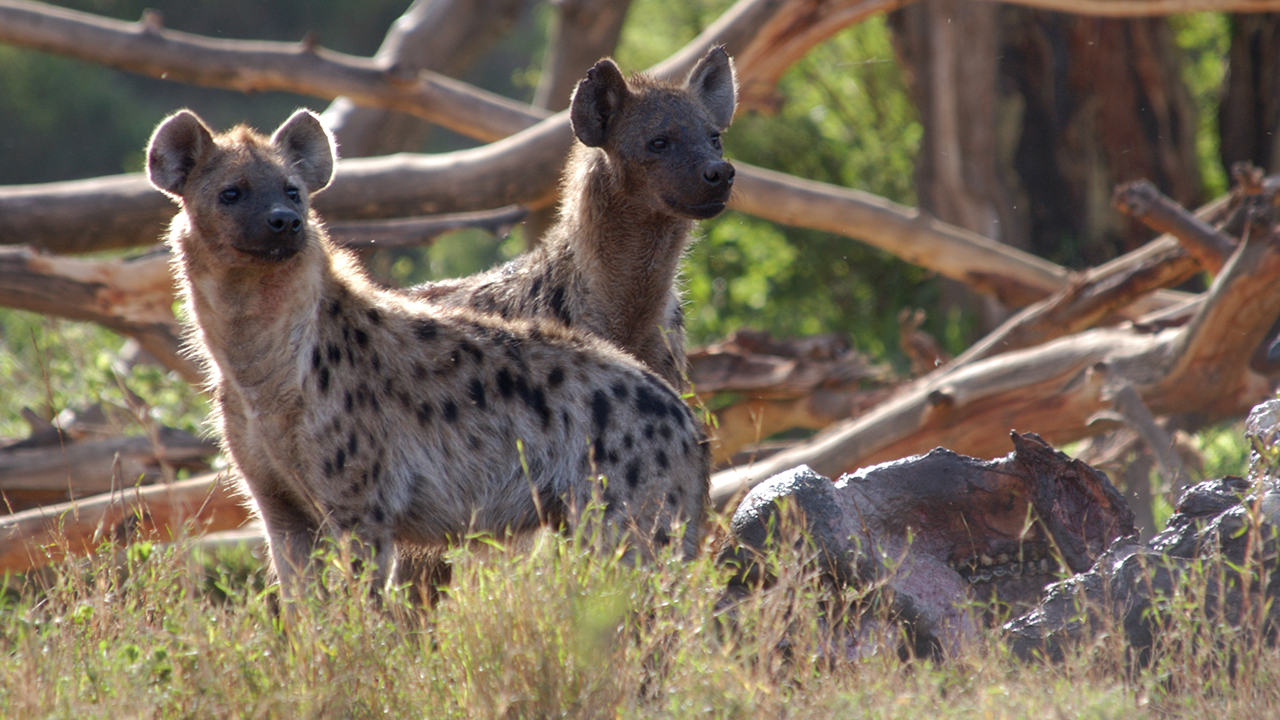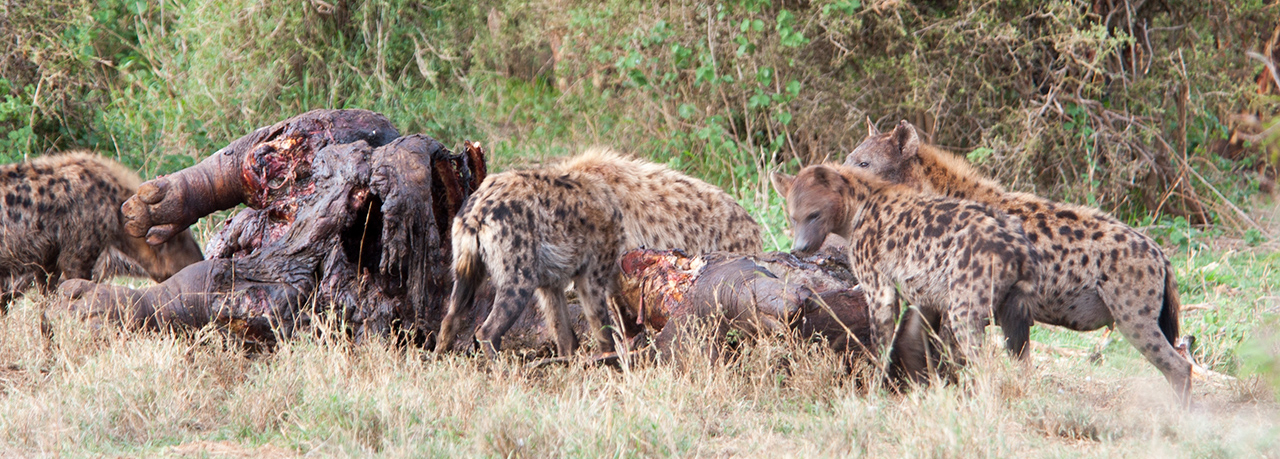Social Structure
Female and male spotted hyenas have separate social hierarchies, but all females outrank all males. A clan can have as few as 3 individuals or as many as 90. The amount of available prey in an area determines clan size. Female spotted hyenas stay with the clans where they were born and inherit their rank from their mothers. Males immigrate to unrelated clans. An immigrant male assumes the lowest rank in his new clan. In male hierarchy, rank increases as older or resident males die or leave the clan. To maintain stability, males form alliances with those nearest them in rank. To form alliances and maintain the social structure, both sexes engage in ritualized greeting ceremonies. Two individuals stand parallel to each other, but face opposite directions, then the higher ranking individual inspects the genital region of the lower ranking member.
Communication
Each member of a clan helps defend the territory, using vocalizations, scent marking, and boundary patrols. Resident males lead the boundary patrols, while adult females are usually the ones using vocalizations and scent marking. Spotted hyenas produce a fatty secretion in their anal glands, which they drag along vegetation to produce a scent mark. Clan members share chemical signatures, so they can identify their clan’s marker. A member’s response depends on the rank of that individual. Similarly, each individual makes a distinct, loud whoop that it uses to gather clan members. High-ranking individuals use this call more frequently than others, though they all emit the canonical hyena “laugh.”
Behavior
Spotted hyenas lead nocturnal lives, but remain active during dawn and dusk and will occasionally forage during the day. These hyenas rest in dense vegetation or in burrows during the day to stay cool. Although territorial, some spotted hyena populations will leave their clan’s territory and travel extensive distances to hunt and find water.
Conservation
Spotted hyena populations are stable within protected areas, however they are declining beyond the boundaries of these areas due to human persecution. Populations of spotted hyenas are highly vulnerable to poisoning, wire snares, and vehicle hits. In some parts of Africa, live hyenas are used for witchcraft, and their bodies are used for traditional medicines.

